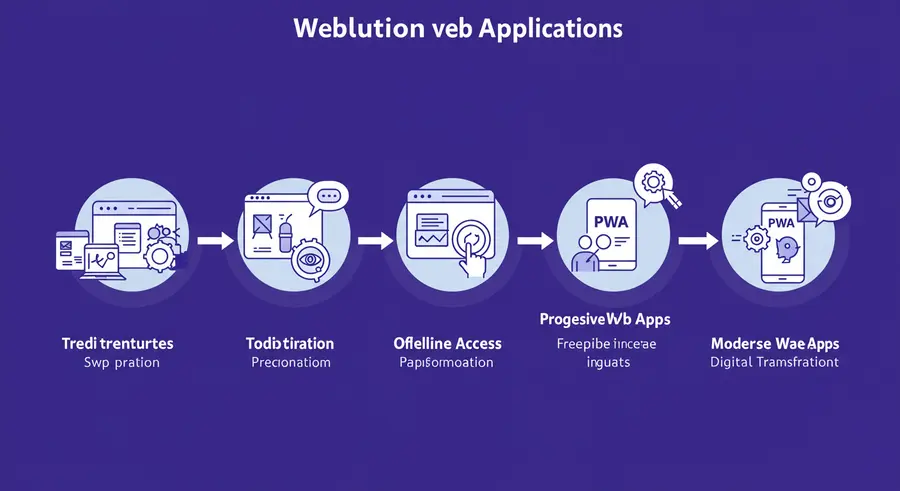The Future of Progressive Web Apps: Bridging the Gap

Progressive Web Apps have already demonstrated their capability to deliver fast, reliable, and engaging experiences. But what does the future hold for this transformative technology? The trajectory points towards even greater integration with operating systems, richer native-like functionalities, and a blurring of lines between web and installed applications.
Emerging Web Capabilities: Project Fugu and Beyond
A significant driver for the future of PWAs is Project Fugu, an initiative by Google and other browser vendors to close the capability gap between web applications and native apps. This project aims to expose more native device capabilities to the web platform, allowing PWAs to do things previously exclusive to native applications. Imagine PWAs accessing contacts, Bluetooth devices, NFC, or even file system directly, securely, and with user permission.
- File System Access API: Enabling direct read/write access to files and folders.
- Web Share Target API: Allowing PWAs to receive shared content from other applications.
- Badging API: Displaying notification badges on app icons.
- Wake Lock API: Preventing the device from dimming or locking the screen.
- Web Serial, Web USB, Web Bluetooth: Interacting with hardware devices directly from the browser.
These advancements mean PWAs will continue to grow in power and utility, making them even more compelling for developers and users alike. The ability to integrate deeply with the underlying operating system unlocks countless new possibilities for sophisticated web applications.
Enhanced Performance and Offline Experience
While current PWAs excel in offline capabilities through service workers and caching strategies, the future will bring even more robust and intelligent offline experiences. This includes advanced background synchronization, better resource prediction, and more resilient offline data management. Technologies like WebAssembly will also play a crucial role, enabling near-native performance for computationally intensive tasks directly within the browser, pushing the boundaries of what web applications can achieve.
Deeper OS Integration and Discoverability
The push for deeper operating system integration extends beyond just APIs. We're seeing efforts to make PWAs more discoverable and manageable alongside native applications. This means better integration with app stores (where appropriate), improved installation flows, and more consistent user experiences across different platforms. The goal is for users to perceive PWAs not just as websites, but as fully-fledged applications that simply run on the web.
Consider how AI-powered market insights are transforming financial analysis, offering powerful tools for users to navigate complex data. Similarly, PWAs are streamlining how users interact with digital content, simplifying access and enhancing functionality.
The Rise of WebXR and Immersive PWAs
The convergence of web technologies with immersive experiences like Virtual Reality (VR) and Augmented Reality (AR) through WebXR is another exciting frontier. Imagine PWAs that offer immersive shopping experiences, interactive educational content, or even virtual meetings, accessible directly from a browser tab or installed on your device. This opens up entirely new paradigms for user interaction and content delivery.
The Future is Progressive
In essence, the future of Progressive Web Apps is about progressive enhancement taken to the next level. It's about building web applications that are inherently flexible, adaptable, and capable of leveraging the best features of any device or platform. As web standards evolve and browser support expands, PWAs will continue to solidify their position as a leading solution for delivering high-quality, accessible, and performant digital experiences. The web is becoming an even more powerful platform, truly bridging the gap between traditional websites and native applications, offering robust custom portfolios for financial growth and diverse interactive applications for everyday life.